Resources for Field Trips
Grades K - 2
- Before You Arrive-- Preparation for Your Field Trip
- Mars in a Minute
- A series of 60-second, animated videos that teaches key concepts about Mars and missions to the Red Planet
- Kid Zone: The International Space Station (ISS)
- interactive website that helps students understand how astronauts live and work in space
- STEMonstrations: Bone Density and Muscle Stress in Microgravity
- Hands-on activities describing the effects of microgravity on the human body - pdf
- Mars in a Minute
- After Your Field Trip-Continuing the Learning Process
- Observing the Moon
- Learn about the phases of the moon, develop an understanding of the relative positions of the Sun, Moon and Earth, discuss when the Moon can be seen and keep a journal of the Moon's position and appearance.
- Rockets by Size
- Students cut out, color and sequence paper rockets from tallest to shortest -- and shortest to tallest -- in a simple mathematics lesson on measurement.
- Build the Station Simulation - Educator Guide
- Just as international space agencies cooperated to build the International Space Station, students can work together to build a paper model of the world's largest orbiting laboratory. Teams take on the roles of international partners as they learn about and assemble portions of the model. During a mock summit, each team briefs the group about their section of the model. The teams then assemble the entire model to complete the space station.
- Observing the Moon
Grades 3 - 5
- Before You Arrive: Preparation for Your Field Trip
- All About Mars
- Cool facts, images, and infographics about the planet and its moons
- The Adventures of Echo the Bat
- Classroom activities and lesson plans that introduce concepts basic to the understanding of remote sensing
- How to Yell Across a Solar System
- Overview of the electromagnetic spectrum and how spacecraft use distinct parts of the spectrum to communicate with Earth while exploring our solar system
- All About Mars
- After Your Field Trip-Continuing the Learning Process
- Touchdown
- Students will use what they know and can investigate about gravity, motion, and forces to design and build a shock-absorbing system that will protect two "astronauts" when they land.
- Light but Strong: A Lesson in Engineering
- Design and build a mobile launcher platform that is light enough to be moved to the launch pad, but strong enough to hold the weight of the rocket.
- Sally Ride EarthKAM
- This exciting opportunity allows students to take pictures of Earth from the Sally Ride EarthKAM digital camera aboard the International Space Station. Participation is free.
- Touchdown
Grades 6 - 8
- Before You Arrive-- Preparation for Your Field Trip
- NASA Knows!
- Website with general information about aeronautics, astronauts, rockets and other space vehicles, technology, aerospace careers, and the solar system and beyond
- STEMonstrations: Bone Density and Muscle Stress in Microgravity
- Hands-on activities describing the effects of microgravity on the human body
- Get to Know the Space Station
- website with up-to-date information about the current International Space Station crew, streaming videos, and science performed on the station
- NASA Knows!
- After Your Field Trip-Continuing the Learning Process
- Jupiter Jockey: A 'Pi in the Sky' Math Challenge
- After a five-year journey from Earth, the Juno spacecraft arrived at Jupiter on July 4, 2016. Its main goal is to help scientists understand the origin and evolution of the largest planet in our solar system. In this activity, students use the mathematical constant pi to find out how far the Juno spacecraft travels in its highly eccentric orbit about Jupiter.
- Engineering a Rocket Transporter
- Design, build and program a robotic "super crawler" to transport a payload from a starting position to a target launch pad, use a robotic arm with an end effector to deliver the payload in an upright position and return the robot to the starting point. Students will use the engineering design process to guide them in completing the challenge.
- Train Like an Astronaut
- Out-of-this-world activities for a healthier generation of kids.
- Jupiter Jockey: A 'Pi in the Sky' Math Challenge
Grades 9 - 12
- Before You Arrive-- Preparation for Your Field Trip
- Inside SLS: Outfitting the World's Most Powerful Rocket
- Learn how the Space Launch System's core stage components, including sensors, cables, flight computers and other equipment, are being outfitted for the first SLS mission, Exploration Mission-1.
- Journey to Mars
- Overview of Mars and past, present, and future explorations of Mars.
- Spot the Station
- Learn when the International Space Station will fly over your location.
- Inside SLS: Outfitting the World's Most Powerful Rocket
- After Your Field Trip-Continuing the Learning Process
- Let's Go to Mars! Calculating Launch Windows
- In this math-based activity, students will learn that launching to Mars requires a spacecraft to travel in an elliptical orbit about the sun such that the spacecraft and Mars will arrive in the same place at the same time. Their task in this exercise will be to determine when we should next launch to Mars.
- The Air Up There: Making Space Breathable
- During this activity, students will design an air-recycling system capable of capturing simulated carbon dioxide so astronauts can breathe safely while on the International Space Station or a future Mars mission.
- Gravity Spy
- Become citizen scientists by helping scientists at the Laser Interferometer Gravitational-wave Observatory (LIGO) search for gravitational waves, the elusive ripples of space-time.
- Let's Go to Mars! Calculating Launch Windows

